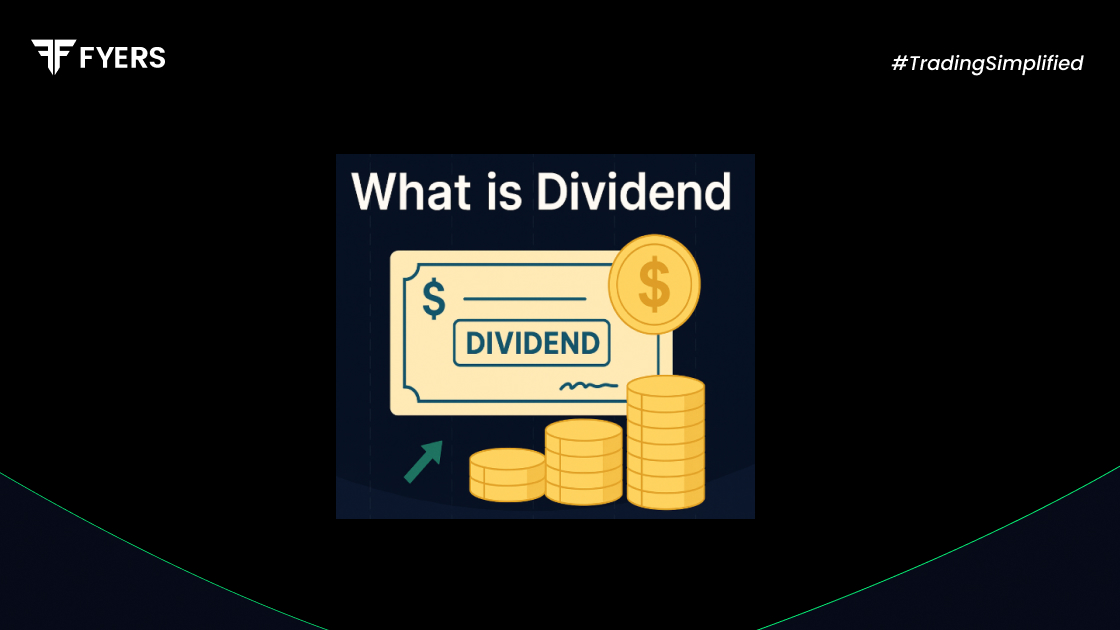

 30 Sep, 2025
30 Sep, 2025
 5 mins read
5 mins read

A dividend can feel like a quiet thank-you note from a company to its shareholders. It is more than money changing hands; it is a signal that a business is confident enough in its future to share a piece of its present. Much like the fruit of a tree that keeps growing, dividends remind investors that ownership can reward not only in long-term value but also in steady, tangible returns. They have become a language of trust between companies and those who back them.
A dividend is a portion of a company’s earnings that it decides to distribute to shareholders. It is most commonly paid in cash but may also come in the form of extra shares or other benefits. While many well-established companies offer dividends, younger or growth-focused firms may prefer reinvesting their profits into expansion rather than sharing them.
Dividends act as a reward for investors and are often interpreted as a sign of financial strength.
When a company earns profits, the board of directors decides whether to reinvest them or distribute a portion as dividends. Once declared, the payout follows a clear timeline:
Company reports earnings
Board declares a dividend
Shareholders on the record date are identified
Eligible shareholders receive the dividend on the payout date
This process ensures that only those holding shares at the right time benefit.
Companies may choose to pay dividends for several reasons:
Rewarding shareholders: Providing returns in addition to capital appreciation.
Signalling strength: Regular payouts demonstrate consistent profits and stability.
Attracting investors: Many investors, particularly those focused on income, seek dividend-paying stocks.
Using surplus cash efficiently: Rather than leaving money idle, companies share it with shareholders.
Cash Dividend: The most common, paid directly into shareholders’ accounts.
Stock Dividend: Issued as additional shares rather than cash.
Interim Dividend: Paid before the annual financials are finalised, often based on quarterly results.
Final Dividend: Declared after yearly accounts are completed.
Special Dividend: A one-time payout due to exceptional profits or events.
Understanding dividend-related dates is key for investors:
Declaration Date: When the board announces the dividend.
Record Date: Only shareholders on record by this date are eligible.
Ex-Dividend Date: Typically set one or two working days before the record date. Buying on or after this date means missing the dividend.
Payment Date: When the dividend is actually credited.
Dividends are usually calculated as a fixed amount per share or as a percentage of the face value.
Dividend Example:
If a company declares Rs. 10 per share and you own 100 shares:
Dividend = 100 × Rs. 10 = Rs. 1,000
Dividend Yield Formula:
|
Dividend Yield = (Dividend per Share / Market Price) × 100 |
If the dividend is Rs. 10 and the share price is Rs. 200:
Dividend Yield = (10 / 200) × 100 = 5%
The dividend payout ratio, another key metric, shows the proportion of profits distributed as dividends compared to profits retained.
|
Feature |
Dividend |
Capital Gains |
|---|---|---|
|
Source |
Share of company profits |
Profit from selling shares |
|
Realisation |
Without selling the investment |
Only when you sell the investment |
|
Frequency |
Regular (quarterly or annually) |
Irregular or one-time |
|
Taxation |
Taxed in the year received |
Taxed in the year gains are realised |
Both play a role in returns. Dividends offer a steady stream of income, while capital gains can deliver larger, occasional profits.
Dividends are central to valuation models, especially the Dividend Discount Model (DDM). Analysts estimate stock value using projected dividends and discounting them to the present:
Formula:
|
Stock Value = Expected Dividend / (Cost of Equity – Dividend Growth Rate) |
This model is particularly useful for valuing established, dividend-paying companies.
Since April 2020, dividends are taxable in the hands of investors:
Individual investors: Dividends are taxed at applicable income tax slab rates.
TDS: If dividends exceed Rs. 5,000 per company in a year, 10% TDS is deducted.
Foreign dividends: Taxed as per slab rates. Double Taxation Avoidance Agreements (DTAA) may allow credit for foreign taxes paid.
Earlier, companies bore the burden via Dividend Distribution Tax (DDT), but this is no longer the case.
At its heart, a dividend is about participation. When companies decide to share their earnings, they are inviting investors to celebrate in their progress. It is like owning a theatre seat and being given a share of the ticket sales every season, while still holding on to your spot in the hall. For investors, dividends offer more than numbers on a balance sheet; they provide reassurance, rhythm, and sometimes even surprise. Knowing how they work and how they are taxed equips you to make decisions that are not just about wealth but about the way you grow it over time.
You must buy the stock before the ex-dividend date. If purchased on or after the ex-dividend date, the seller keeps the dividend.
Yes. Dividends are not mandatory. A company can reduce or stop them depending on profits, cash flow, or reinvestment needs.
No. Start-ups and growth-oriented firms usually reinvest earnings rather than distribute them as dividends.
A special dividend is a one-time payment made under unusual circumstances, such as excess profits or asset sales. It is not part of the regular payout policy.
Calculate your Net P&L after deducting all the charges like Tax, Brokerage, etc.
Find your required margin.
Calculate the average price you paid for a stock and determine your total cost.
Estimate your investment growth. Calculate potential returns on one-time investments.
Forecast your investment returns. Understand potential growth with regular contributions.